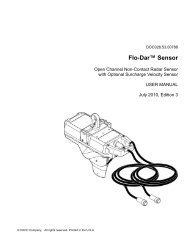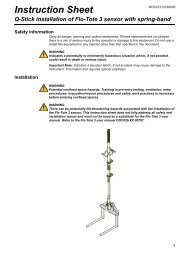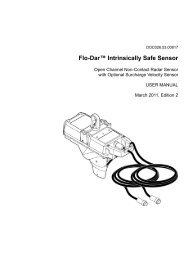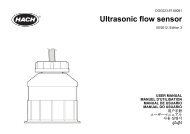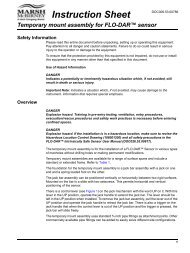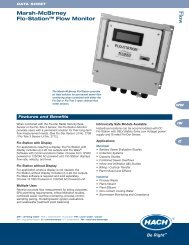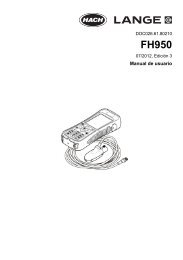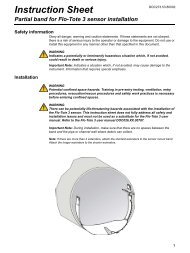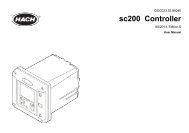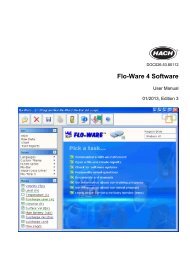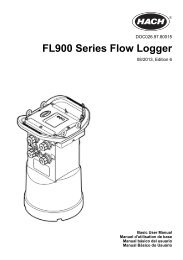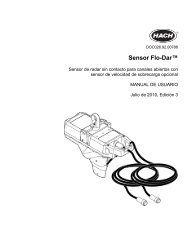FH950 User Manual English - Hachflow
FH950 User Manual English - Hachflow
FH950 User Manual English - Hachflow
Create successful ePaper yourself
Turn your PDF publications into a flip-book with our unique Google optimized e-Paper software.
neighbor verticals in each case. For this reason, the first and last verticals should be as near to the<br />
edges as possible (i.e., left edge of water (LEW) and right edge of water (REW)). Boundary<br />
conditions dictate the proximity of the first and last vertical to the edge of water.<br />
Experience shows that the Mid-section method gives more exact results compared to the Meansection<br />
method so it is the default setting. Figure 16 shows the definitions and equation for the Midsection<br />
method.<br />
Figure 16 Mid-section method<br />
Where:<br />
m = station number<br />
n = total number of stations<br />
V = velocity at vertical<br />
b = distance to vertical from bank<br />
h = depth at vertical<br />
q = flow at vertical<br />
Profiles and measurements<br />
Profiles can be set up for streams or conduits. Figure 17 shows an example of a typical profile shape<br />
in a conduit. In a typical profile, velocity is less near a wall or edge than at the center and decreases<br />
near the surface. Multiple velocity measurements in the profile are averaged to calculate the total<br />
flow. Measurements for conduit profiles are made from the bottom up. Measurements for stream<br />
profiles are made from the top down.<br />
In the Main Menu, select Profiler. The meter prompts for the operator name, the type of profile<br />
(stream or conduit) and the profile name. Do the instructions for the selected profile type.<br />
32 <strong>English</strong>



